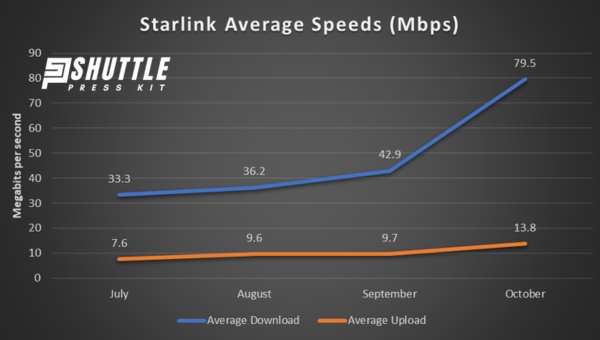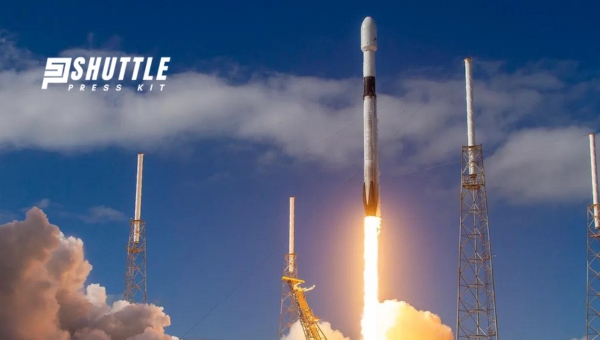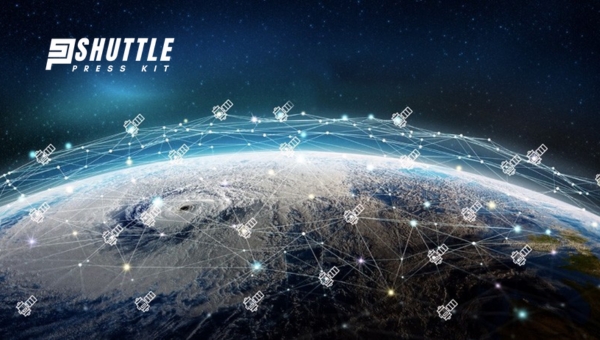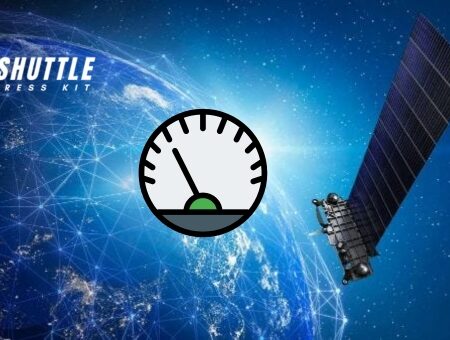Explore the new era of internet connectivity through SpaceX’s Starlink satellite service. Learn about its median latency and ping times, how they compare to traditional ISPs, the factors affecting connection quality, and real-world user experiences.
Discover how latency impacts online gaming and streaming activities, all relevant for potential or current subscribers.
What is Latency, and Why Does it Matter?
When we talk about the Internet and network connections, an important term that often comes up is latency.

Whether you’re gaming or streaming your favorite shows, this seemingly small factor plays a big role in your online experience.
In the simplest terms, latency refers to the delay time it takes for data to travel from one point to another across a network. It’s like the waiting period you experience when you click on a website link until that site appears on your screen. The lower these delay times are, the faster and smoother your online activities become.
The Impact Of Latency
Latency has substantial impacts on various aspects of our digital lives:
- Gaming: In fast-paced online games where every second counts, high latency could mean the difference between victory and defeat. Low ping times keep reaction times quick and gameplay smooth.
- Streaming: Imagine watching an intense scene in a movie only for it to buffer or pixelate because of high latency—that would be frustrating! For seamless viewing experiences without interruptions, low latency is vital.
- Video Conferencing: Have you ever experienced talking over each other during a virtual meeting due to time lag? That’s high latency at work right there. To have clear communication with no overlap in audio or freeze frames during visual calls, low latency becomes necessary.
Also Read: Starlink Maritime: Revolutionizing Connectivity at Sea
Starlink by SpaceX

Starlink is an ambitious project developed by Elon Musk’s renowned company, SpaceX. Its main goal is to deliver fast and reliable internet connections across the globe using a vast network of satellites.
An Overview
Launched by SpaceX, Starlink aims to provide nothing short of high-speed broadband internet to even the most remote corners of our planet. By sending thousands of small satellites into low Earth orbit (LEO), Starlink intends to bridge the digital divide, ensuring everyone has a chance at powerful and efficient online connectivity.
Technologies Behind Starlink
Starlink achieves this mission with innovative technology not seen in typical Internet Service Providers. This involves the use of advanced satellites, known as F9s, orbiting closer to Earth than traditional ones, hence reducing latency.
A cutting-edge phased-array technology ensures that these satellites can communicate effectively with base stations on Earth, thus providing fast and reliable space-based internet services.
Unveiling Median Latency for Starlink
One of the most talked-about performance indicators for any Internet Service Provider (ISP), including Starlink, is latency.
Investigating Median Latency
To better understand this idea, let’s dive headfirst into some figures about the median latency that Starlink currently provides. Our investigation reveals that data from Ookla Speedtest Intelligence suggests the median latency of Starlink is 45 milliseconds.
That’s a pretty decent figure, considering its space-bound nature! Although a little higher than conventional ISPs, it’s significantly lower than some other satellite internet providers (take HughesNet, for example, with an average of around 600ms).
Comparison with Traditional ISPs
Now that we have these figures at hand, here’s a simple table comparing them to traditional broadband providers:
| ISP Type | Median Latency |
|---|---|
| Starlink | 45 ms |
| Cable | 14 ms |
| DSL | 30 ms |
| Fibre Optic | <3 ms |
These numbers bring into light how well Starlink stands against other types of internet connections. True, it does fall short compared to cable or fiber optic services but remember! It’s delivering this speed nearly from space! It surpasses what was previously thought possible by leaps and bounds.
Also Read: Starlink Roam vs Starlink Residential: What’s Best for You?
Factors Affecting Starlink’s Performance
When it comes to internet performance, many elements come into play. While that still rings true for traditional ground-based services, a different set of factors can impact the performance of a satellite internet service like Starlink.

Satellite Constellation Dynamics
One key factor is satellite constellation dynamics. When I talk about this, what I mean is how the satellites are arranged in space and how they move. You see, Starlink’s network depends on thousands of satellites orbiting the Earth.
The closer these satellites are to the user, the less latency or delay there is in data transmission. Now, here’s where it gets interesting – these satellites are constantly moving! This means that your data might travel via different satellites at different times, impacting your user experience.
Environmental Considerations
The natural world can also influence how well our space-based internet works —I’m talking about environmental considerations here, folks! Let’s break down a few:
- Weather conditions – Things like heavy rain or snowfall can interfere with radio waves as they travel from space to your home device.
- Natural obstructions – Got mountains around? Or maybe large buildings? These things could potentially block part of the signal path.
- Astronomical factors – Remember those solar flares we hear about on scientific shows? Yeah! They can distort our signals, too!
It’s pretty wild to think about all the things that both Mother Nature and physics have in their bag when it comes to shaping our web-browsing experiences!
Real-World User Experiences
In the vast landscape that is the internet, user experiences can vary greatly. In this section, we will put a spotlight on how Starlink’s latency and ping times impact two common online activities: gaming and streaming.
Gaming Scenario Analysis
There’s no denying it — gamers need speed. And not just any sort of speed. They need low-latency connections that ensure gameplay isn’t interrupted by lagging or stutters, which could make the difference between win or lose. Based on several accounts from gamers who have made the switch, Starlink’s latency tends to work decently for most online games though some might experience minor hiccups during high-stakes gaming moments.
Streaming Quality
Shifting gears to video streaming, it’s all about maintaining high-quality visuals without buffering pauses — and yes, that largely depends on connection performance too! Online streamers using Starlink typically report acceptable quality for HD streams.
That being said, occasional data dips may lead to brief decreases in resolution but fear not because these instances seem to be pretty rare.
Through this first-hand feedback from real-world users (gamers and streamers), we gain an understanding of how their interactions are shaped by Starlink’s median latency times.
Also Read: Starlink Data Caps: Understanding Limits and Solutions
Frequently Asked Questions
What is latency in the context of internet connections?
Latency refers to the time it takes for data to travel from one point to another.
What does a lower median latency mean?
Lower median latency means faster data transfer, resulting in smoother online experiences.
How might Starlink’s service differ from traditional Broadband ISPs?
Starlink provides internet service via satellites, unlike traditional ISPs which utilize land-based infrastructure.
What factors can affect Starlink’s performance or ping times?
Satellite movements and environmental conditions like weather and natural obstructions can influence performance.
Can gamers and streamers use Starlink efficiently?
Yes, most users report satisfactory experiences in both gaming and streaming with occasional hiccups.
Also Read: Unraveling Starlink Portability: A Gateway to Internet Anywhere
Conclusion
As the digital world evolves, so do our internet needs. Starlink’s satellite-based service presents a promising solution for global connectivity issues, striving to improve median latency and ping times.
In this space-age technology, external factors right from satellite movements to environmental conditions play a crucial role in performance. Real-world user experiences attest to this fact — revealing both triumphs and trials in gaming or streaming scenarios.
As more satellites join the constellation and technologies mature, we might well see an optimization in these latency-related figures over time. Regardless of these dynamic variables, it becomes evident that understanding median latency isn’t just geek-speak but could be pivotal for potential or current subscribers.
